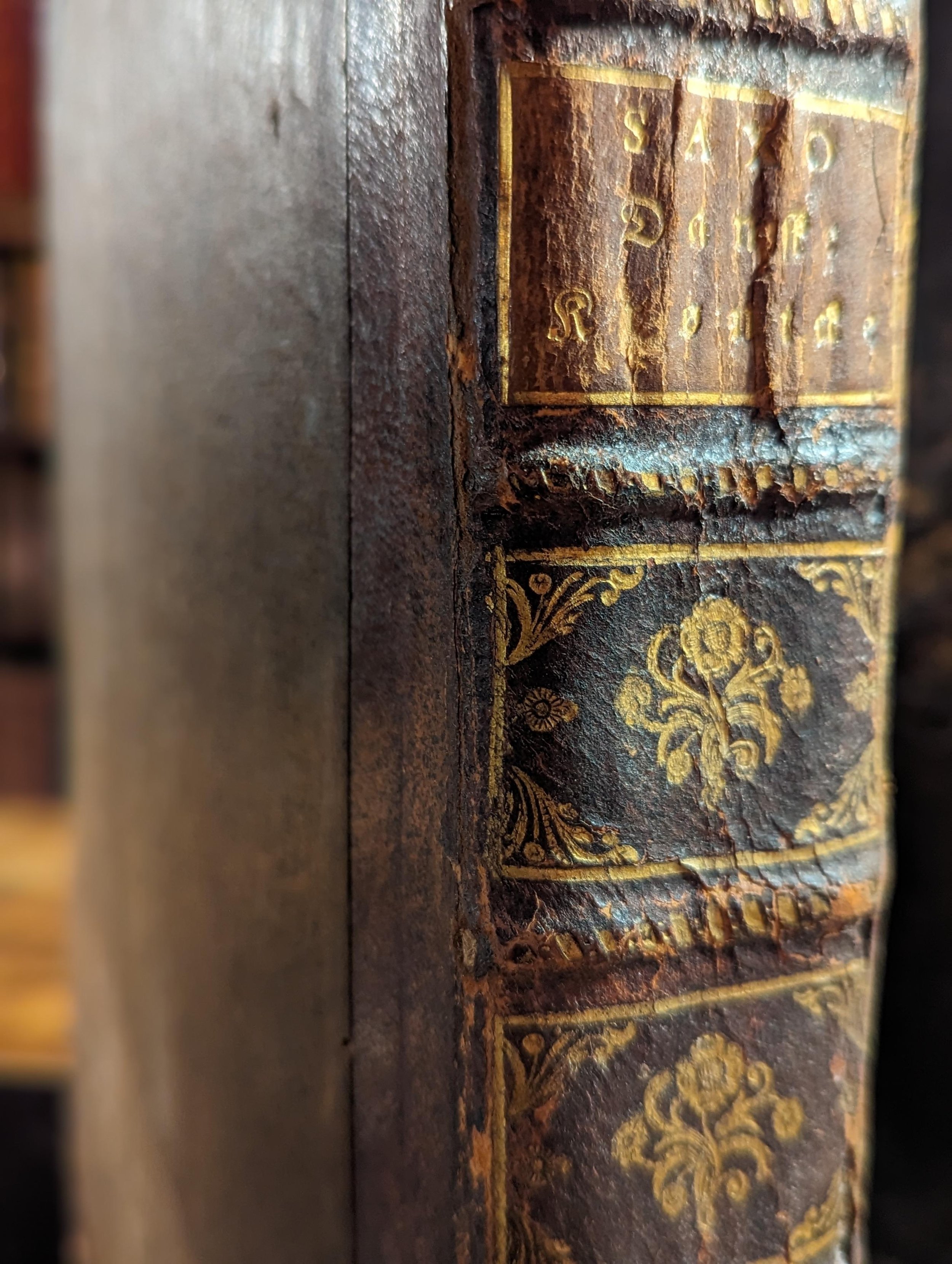 Image 1 of 5
Image 1 of 5

 Image 2 of 5
Image 2 of 5

 Image 3 of 5
Image 3 of 5

 Image 4 of 5
Image 4 of 5

 Image 5 of 5
Image 5 of 5






Saxo Grammaticus (1575)
ONLY FIVE KNOWN COPIES
SAXO GRAMMATICUS (c. 1150-1220)
First Danish edition of the Latin Historia Danica [History of the Danes]. Copenhagen: Hans Stockelmann, 1575.
Den Danske Krønicke som Saxo Grammaticus screff, hallfierde hundrede Aar forleden: Nu først aff Latinen udsæt, flittelige offuerseet oc forbedret, Aff Anders Søffrinssøn Vedel.
The ultimate source of Shakespeare's Hamlet, Saxo’s twelfth-century history narrates the legend of Amleth whose father is murdered by his uncle; the uncle then marries his brother’s widow, Hamlet’s mother, Gertha. Young Amleth feigns madness but ultimately achieves his long-delayed revenge.
There is evidence that Shakespeare may have visited Denmark before the writing of Hamlet. He seems to have an intimate knowledge of Danish customs, such as the use of kettledrums and trumpets to celebrate the king's drinking bouts, that he could not have learned from any known printed source. He takes the names of two of his characters from the Danish astronomer Tycho Brahe's cousins, Holger Rosenkrantz and Axel Guildensterne. There is also a record of three English actors spending several months at the Danish castle of Elsinore in 1586.
Although Shakespeare may have encountered the Amleth story in Belleforest's French translation of Saxo in Histories Tragiques, there is certainly a provocative possibility that he was familiar with the Danish translation of Saxo.
Folio. 18th-century calf binding, gilded, somewhat scuffed and restored. Lacking the title-page, (34), 537. Scattered spotting.
USTC lists only five known copies and none outside of Denmark
USTC 302390
ONLY FIVE KNOWN COPIES
SAXO GRAMMATICUS (c. 1150-1220)
First Danish edition of the Latin Historia Danica [History of the Danes]. Copenhagen: Hans Stockelmann, 1575.
Den Danske Krønicke som Saxo Grammaticus screff, hallfierde hundrede Aar forleden: Nu først aff Latinen udsæt, flittelige offuerseet oc forbedret, Aff Anders Søffrinssøn Vedel.
The ultimate source of Shakespeare's Hamlet, Saxo’s twelfth-century history narrates the legend of Amleth whose father is murdered by his uncle; the uncle then marries his brother’s widow, Hamlet’s mother, Gertha. Young Amleth feigns madness but ultimately achieves his long-delayed revenge.
There is evidence that Shakespeare may have visited Denmark before the writing of Hamlet. He seems to have an intimate knowledge of Danish customs, such as the use of kettledrums and trumpets to celebrate the king's drinking bouts, that he could not have learned from any known printed source. He takes the names of two of his characters from the Danish astronomer Tycho Brahe's cousins, Holger Rosenkrantz and Axel Guildensterne. There is also a record of three English actors spending several months at the Danish castle of Elsinore in 1586.
Although Shakespeare may have encountered the Amleth story in Belleforest's French translation of Saxo in Histories Tragiques, there is certainly a provocative possibility that he was familiar with the Danish translation of Saxo.
Folio. 18th-century calf binding, gilded, somewhat scuffed and restored. Lacking the title-page, (34), 537. Scattered spotting.
USTC lists only five known copies and none outside of Denmark
USTC 302390

